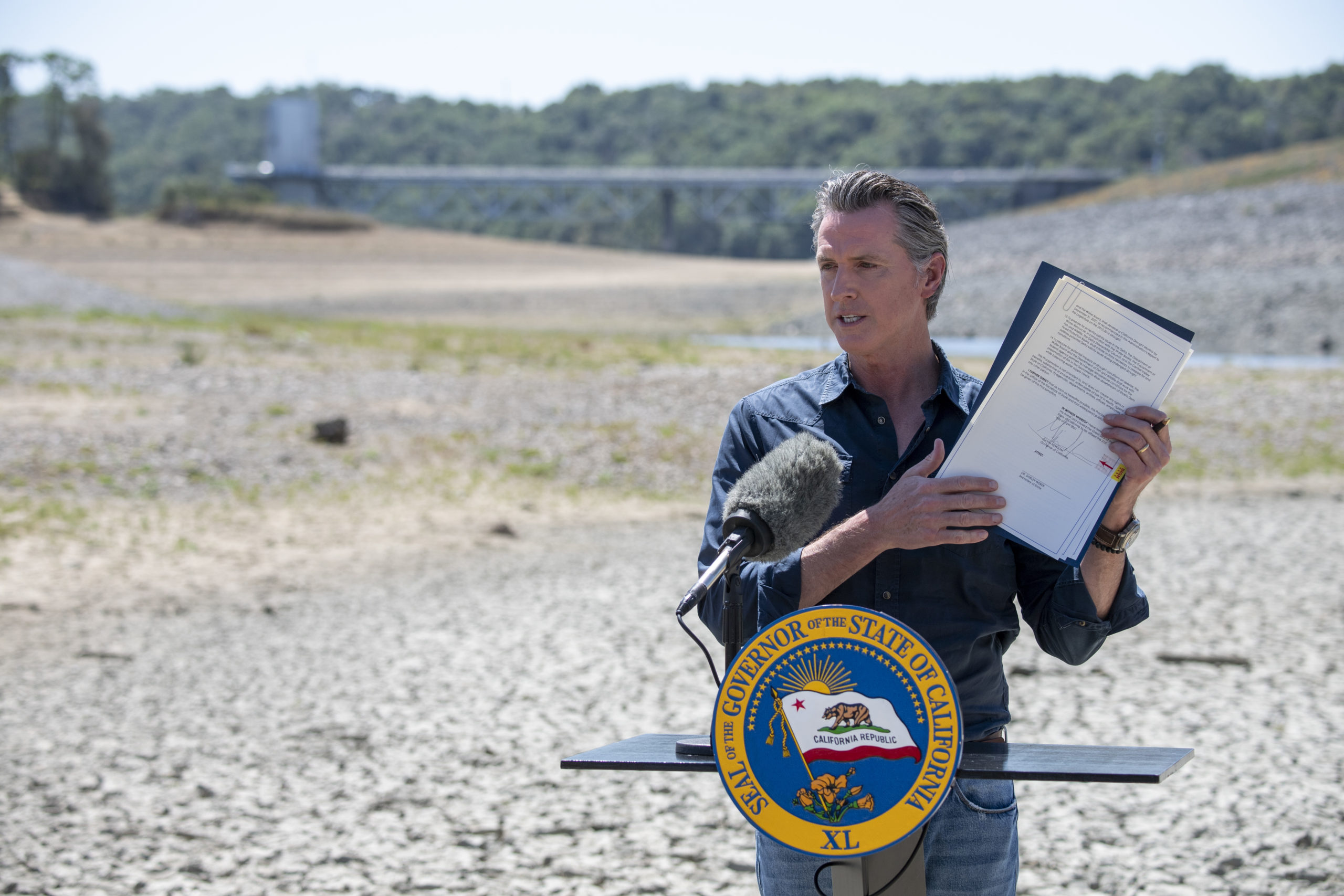Drought is upon California once again. It seems that with every day, there are new stories chronicling how the drought is worsening, threatening communities, the environment, and the economy. California has one of the most complex engineered water delivery systems in the world. In times of plenty and under historic climate conditions, the system works relatively well. But with 85% of California in extreme drought, the system isn’t equipped to allocate resources efficiently or equitably. The state’s infrastructure, laws, and institutions fall short when confronted with scarcity.
In extreme droughts, decisions about who gets limited water are incredibly challenging. These decisions can feel like impossible tradeoffs, all with dire consequences. Consequences that farmers, communities without water, or tribes who rely on endangered fish as a way of life, never have the option to forget. For the environment, it can be a matter of life and death (even extinction, in the case of the endangered chinook salmon). What makes this current situation even more precarious is that many of these tough decisions must be made using insufficient data.
Two recent reports offer 20-20 hindsight of what went wrong in the management of the 2012-2016 drought and lay out forward-looking, tangible recommendations on how to improve water decision making and reach better outcomes in inevitable future droughts. Without real action and investment, history is certain to repeat itself. Notably, both reports identified poor data as a key culprit for management challenges during the prior California drought.
With such high stakes, it is not surprising that a financial analogy is often cited, comparing California water to a bank account. Several financial terms are already familiar in the context of water: withdrawals, overdrafts, and water banking. If we extend this analogy further, we can better understand why our current data and decision-making are problematic.
First, a few key terms in the analogy: Water is our shared bank account, where our shared income and withdrawals impact our collective bottom line. Water demand is the withdrawals, while water supply is the income (which is unpredictable precipitation and runoff, especially given climate change). Comparing that water demand and supply helps us understand actual water availability. That availability is our bank account balance.
So using this analogy, what is the problem? People are making withdrawals from our shared bank account without using a withdrawal slip. We do not know when or how much is being withdrawn or how much remains for others. Imagine sharing a savings account that people can draw from without anyone keeping track. As one example of today’s challenge, it is likely that less than 1% of surface water diversions are being reliably reported despite the existence of recent water measurement regulations.
And every day new debit cards (well permits) to our shared water bank account are being given out! That’s why we support a current policy proposal, SB 552 (Hertzberg), which would require counties to share a summary of new well permits with groundwater sustainability agencies and the Department of Water Resources (DWR). This will help groundwater agencies and the state better understand where there are increases in well permits to better inform short and longer-term proactive drought planning, allowing us to begin to balance the books.
The lack of timely and accurate data means that state authorities must estimate water supply and demand based on long run averages and not current information. Nobody managing their current household budget would think it an acceptable idea to manage their finances solely with last year’s bank statement. Managing water budgets by historical averages does not work.
This is common sense and common practice. Most of us check our bank accounts online at least once a week. Having a current view into our financial resources is the norm; we should expect the same for something as fundamental as water. The good news is that this analogy highlights that the technology already exists to solve our water data challenges.
Managing our most critical resources requires investments. Big banks like JPMorgan Chase invest over $11B a year in technology for IT systems like online banking. Yet our critical water authorities, like the State Water Resources Control Board (SWRCB), run IT systems on a budget that, across all programs, sums to mere fractions of that despite the significance of their operations on society, the environment, and the economy. California water authorities are expected to make decisions with billion-dollar implications yet have access to comparatively miniscule IT budgets. California’s current budget surplus must focus on investing in making our state more resilient against future drought, starting today. Investment in agencies like the SWRCB and DWR are investments into the communities, environment, and economy of California, providing data, transparency, and visibility into our state’s most precious shared resource. This will help ensure the human right to water is accessible to all.
It may already be too late for the immediate impacts of this crisis, but we should not waste this opportunity to act on the lessons we have already learned. We know what to do, and we have the resources to do it, we just need to act. Doing so typically would require courage and a lot of leadership. This year, it merely requires common sense.
Glen Low is a co-founder of the Earth Genome, where he works on water data and tools for local water agencies, river authorities, state agencies and corporations. Glen also teaches corporate environmental sustainability at the Haas School of Business at UC Berkeley.
Mike Myatt is a program officer at the Water Foundation, and serves as the chair of the board of directors for the California Water Data Consortium.
